Charger SkyRC NC2600
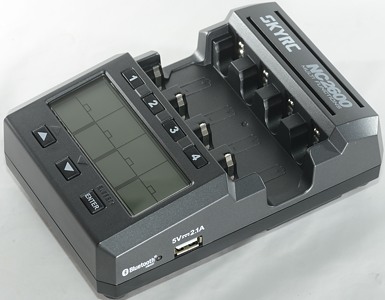
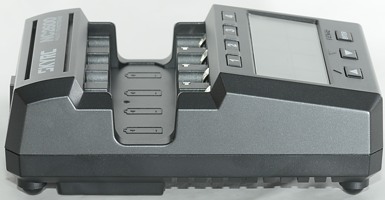
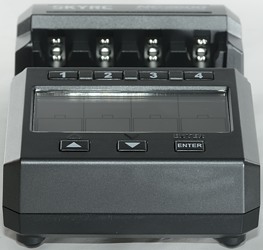
SkyRC mainly makes equipment for RC, that is chargers, power supplies, controllers and measurement equipment. This charger is a four channel analyzing charger and a update of the NC2500, i.e. it can both charge and discharge batteries. It has a Bluetooth link and a app can be downloaded to monitored and control the charger from a phone (Android or iPhone).
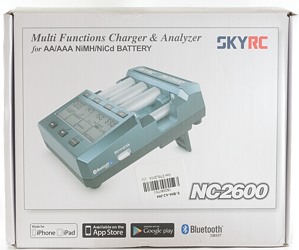
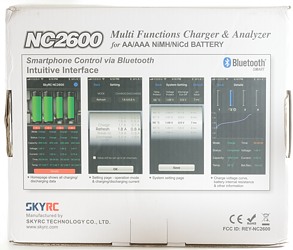
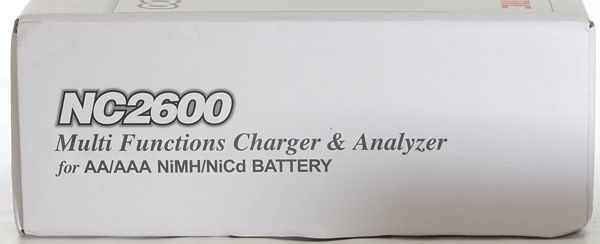

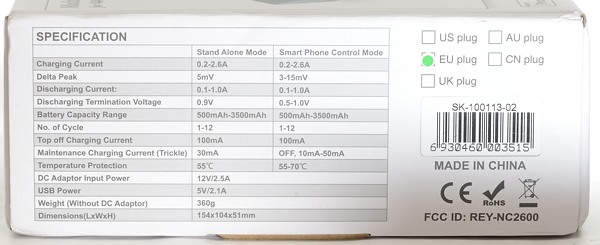

The charger comes in a cardboard box with pictures of the app and specifications. The box has foam inside, making the charger very well protected for shipping.

The box contains the charger, a power supply and a manual (The manual can also be downloaded as PDF file).
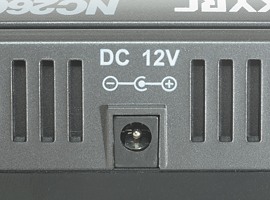
The charger has a DC connector for power input.
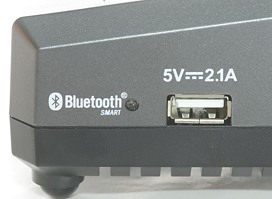
And a usb connector for power output. This usb connector is powered while the charger is powered and can be used for charging other equipment.
It cannot supply power from the batteries.
I expect this to be much more useful in this size charger, than a battery power usb output.
The led is blue and is used to signal Bluetooth connection.
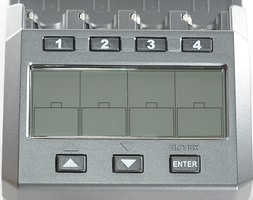
The buttons 1 to 4 is used to select display for each channel.
The up and down buttons is used to select function and current and the ENTER is used to accept selected value.
When a battery is put into a slot, the function must be selected for that slot. This must be done for each slot when filling them. If nothing is done the charger will start charging with the last selected current after some seconds.
The following functions can be selected:
- CHARGE: Normal charge with selected current (200-2600mA)
- DISCHARGE: Discharge battery with selected current (100-1000mA)
- CYCLE: Charge and discharge a couple of times, both charge current, discharge current and cycle count (1-12) can be adjusted.
- BREAK-IN: Slow charge the battery for 16 hours (100mA), discharges and then charges again.
- REFRESH: Charge, discharge and charge, both charge current and discharge current can be adjusted.
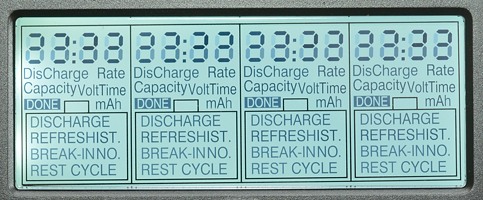
The full display with everything on, notice the DONE indicator.
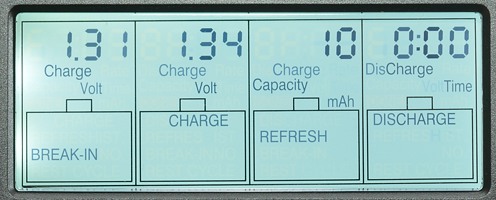
The display is optimized to view from above, and has a fairly limited viewing angle. I.e. sitting on a chair it is difficult to read the display of the charger when it is placed flat on the table. Using the tilting stand helps.
It is possible to change between mAh, mA, time, voltage using the number keys.
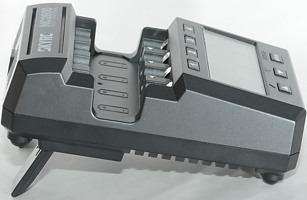
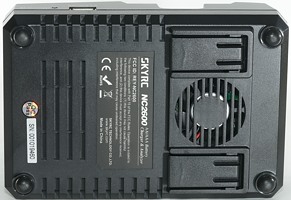
The charger has a fan hidden under it, to get as much air as possible into it there is a tilting stand.
The fan starts when required and can be heard for some distance (Couple of meters).
The fan will get air, even when the tilting stand is not used, due to the rubber feets (My IR photos was without tilting the charger).
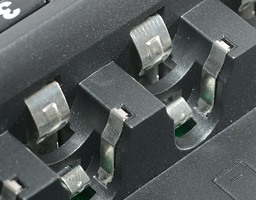
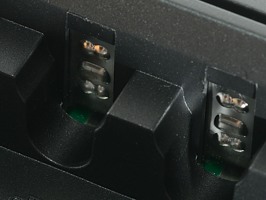
The battery minus connections is in two steps, one for AA and one for AAA, the charger knows what size battery is in it. The metal at the side is the temperature sensor.
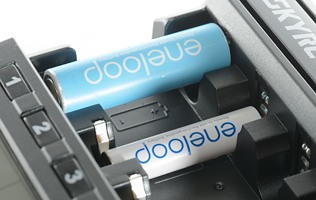
Here the AA and AAA batteries can be seen in the charger.




Phone interface using Android
I did have some trouble using the application. I used a HTC 10 phone.
Click the images for larger versions.

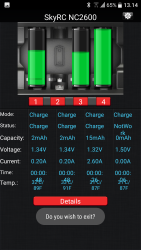
This is the overview picture where settings and values can be seen. Slot #2 has a AAA cell in it, but the graphic is missing and as can be seen the data is not aligned with the batteries or number buttons.

Pressing the Detail button will show data for one battery, including a curve. I could not select the other batteries.

Pressing one of the number buttons makes it possible to select charger function for that slot or for all slots. This worked fine.

Pressing the gear at the top gives access to charger parameters and to adjust them. I did never get this to work.
Measurements
- When not powered it will discharge a full battery with about 0.5mA
- Voltage is measured with current off and is within about 0.02V
- Charger remembers current settings and will use them as default next time.
- Charger will restart charging after power loss, or battery insertion.
- Power consumption when idle is 1.4 watt
NiMH charge
Charge rate between 200mA and 2600mA must be selected.
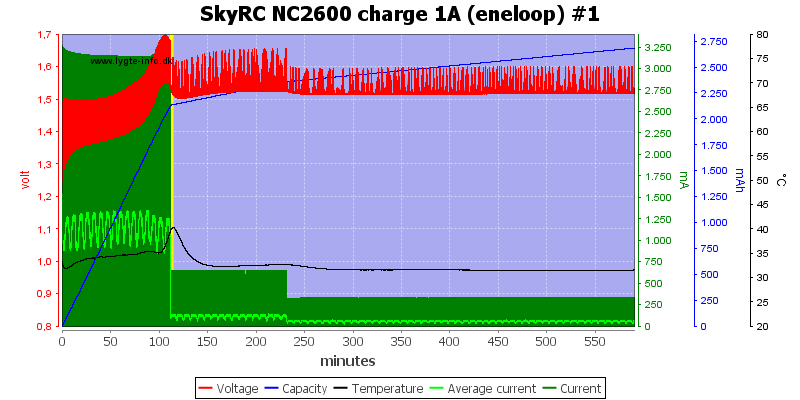
This curve looks like the charger uses -dv/dt to terminate, then a top-off charge and finally a trickle charge.
Display shows 1861mAh
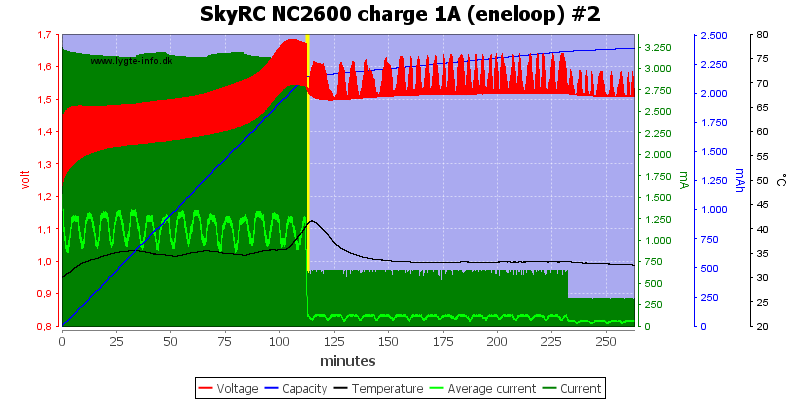
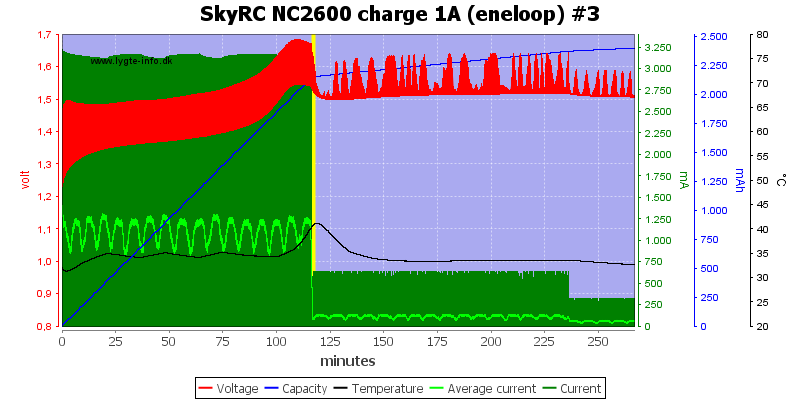
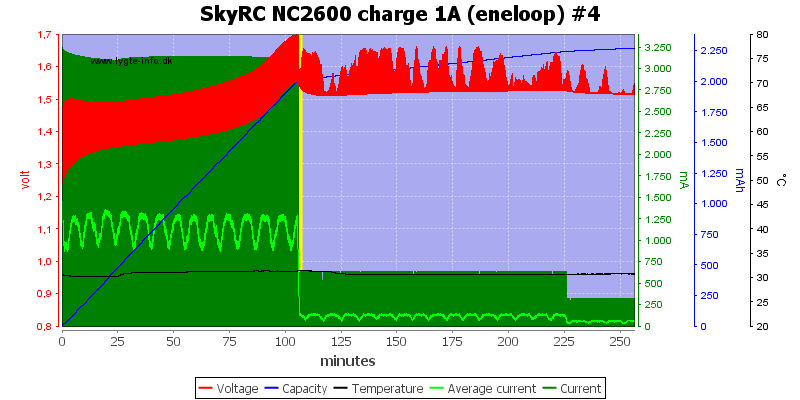
Slot #2 and #3 looks the same, but #4 looks like the charger terminated due to voltage.
Display shows 1868mAh, 1936mAh, 1760mAh
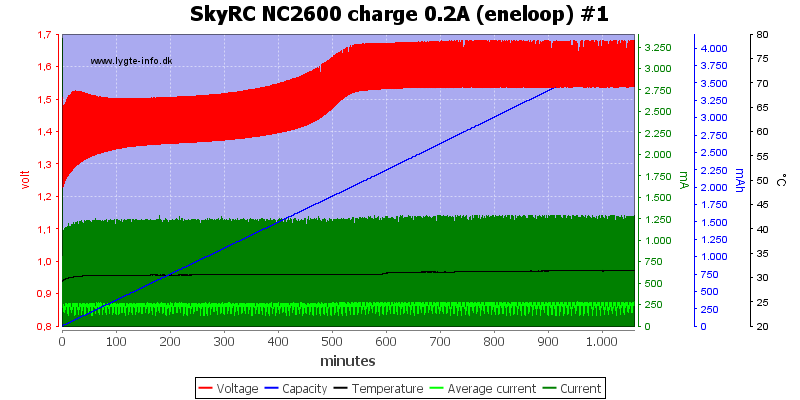
Using 0.2A charge current on AA cells is not a good idea, the current is too low for a normal -dv/dt termination and these cells do not get high enough voltage when charged with a low current. This could be adjusted with the phone application, if it had worked.
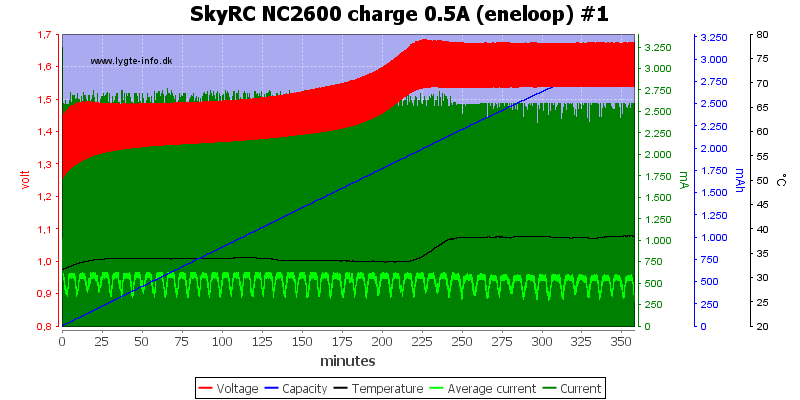
At 0.5A there is also a problem with termination, a lower -dv/dt value would probably fix that.
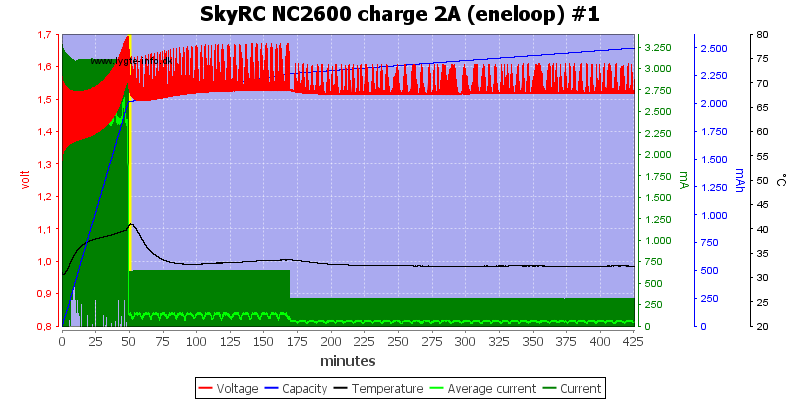
With 2A there is no problem terminating, this time on voltage.
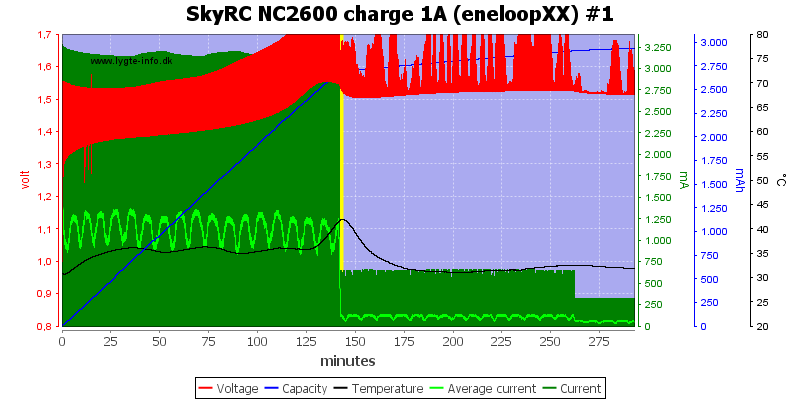
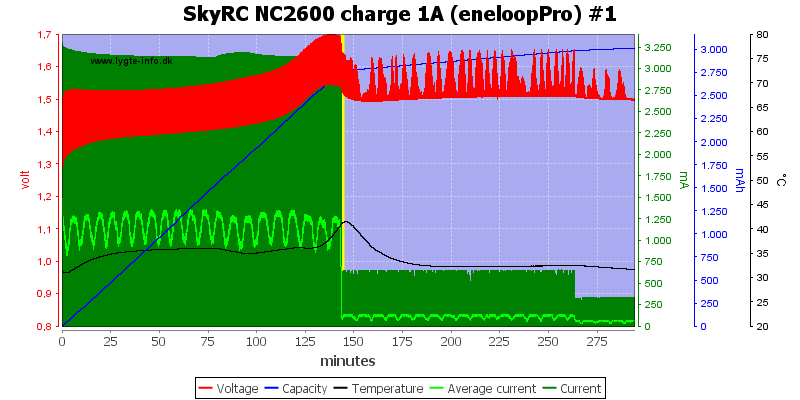
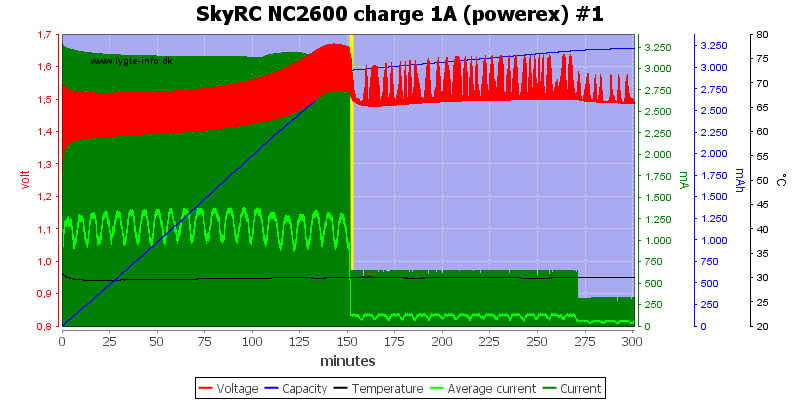
All 3 high capacity cells terminates on -dv/dt and gets a top-off charge.
Display shows 2362mAh, 2387mAh, 2520mAh
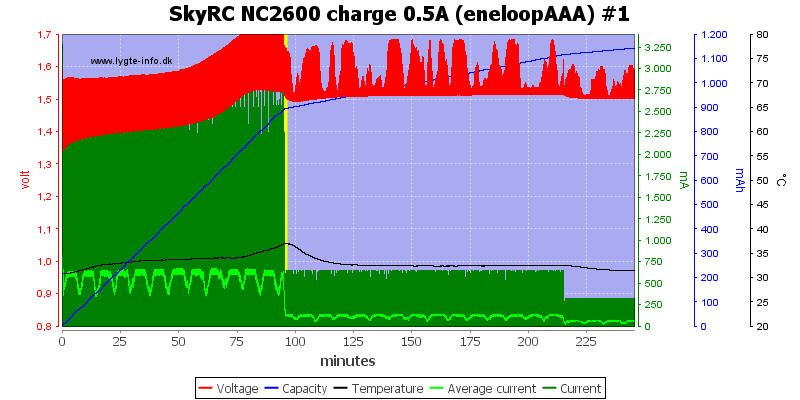
Same with the AAA cell.
Display shows 791mAh
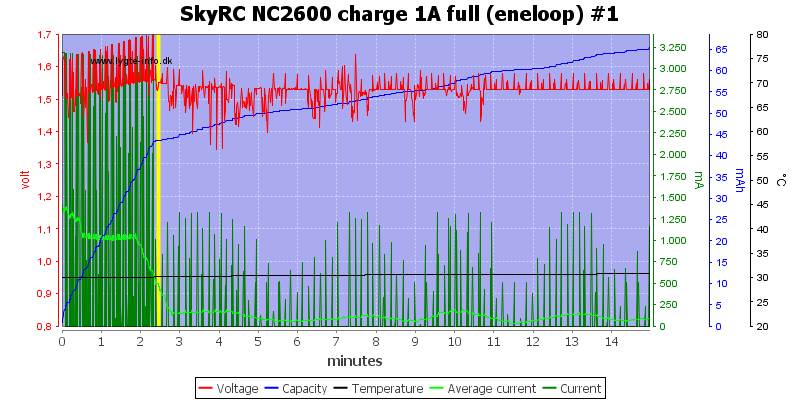
The charger is fast at detecting a full cell, but it do get the top-off charge.
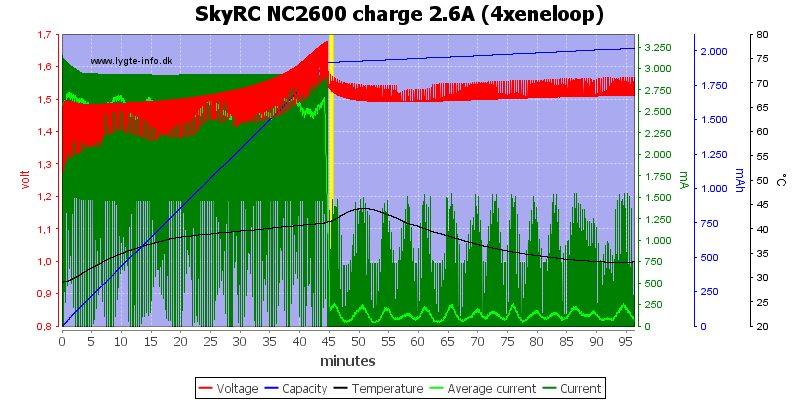
The charger can charge four eneloops in 45 minutes.
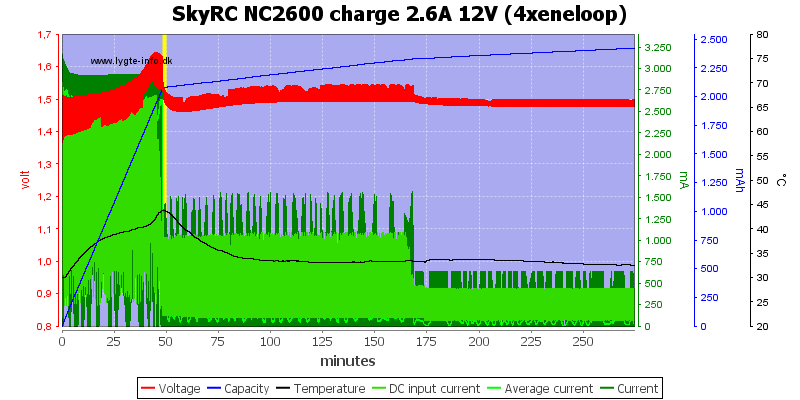
When doing that it draws up to 2.8A.
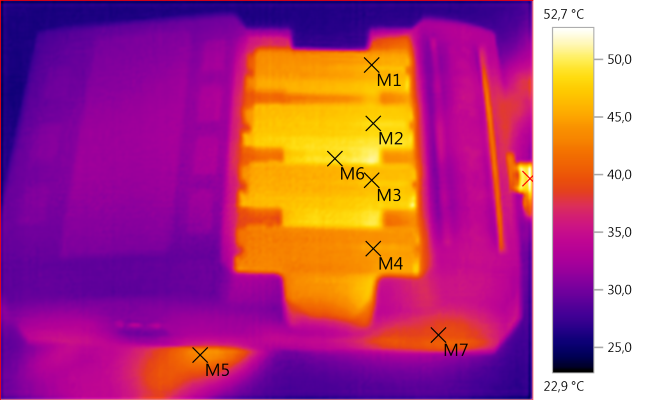
M1: 45,5°C, M2: 48,6°C, M3: 46,7°C, M4: 44,9°C, M5: 43,5°C, M6: 49,1°C, M7: 39,2°C, HS1: 52,7°C
These photos are done with a 2600mA charge, i.e. things will get hot, but it is not that bad.
At lower charge current everything will be cooler
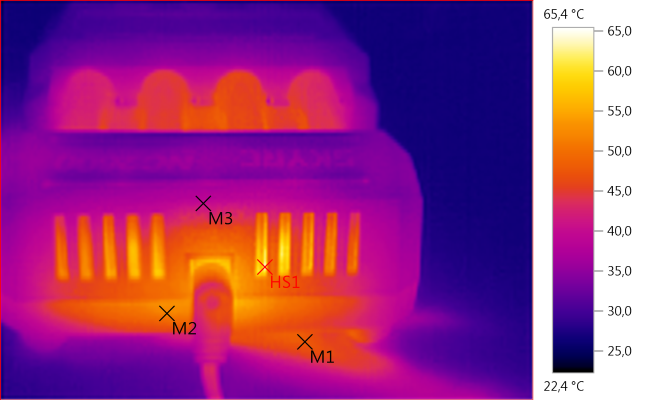
M1: 47,9°C, M2: 51,4°C, M3: 40,4°C, HS1: 65,4°C
The fan is blowing some hot air out the bottom of the charger, look at the table temperature.
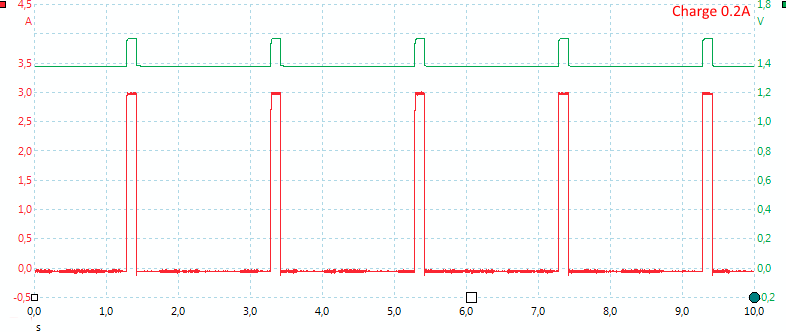
Charging with lowest current setting. The charger uses a 3A pulse, but for a very short time.
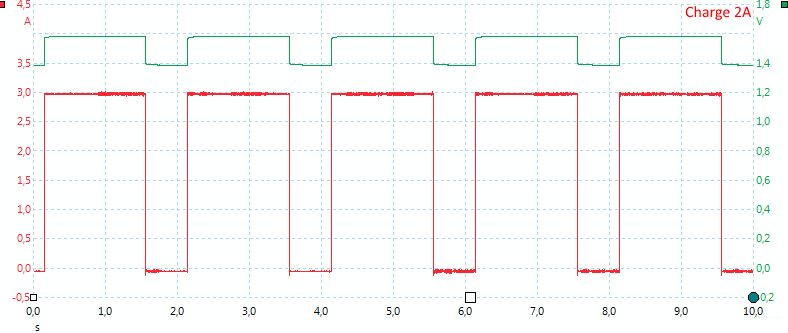
Increasing the charge current to 2A will increase the pulse with.
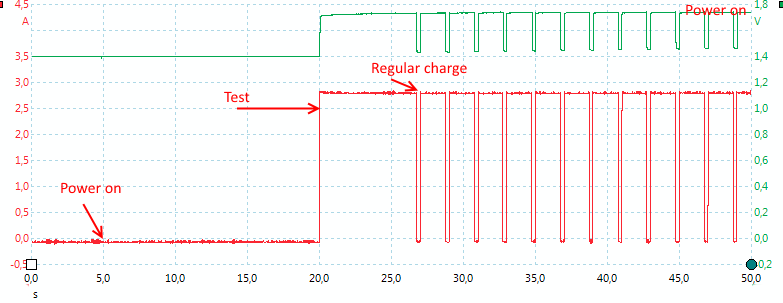
When starting on a charge the charger will first use a 3A pulse for about 8 seconds, then switch to regular charge.
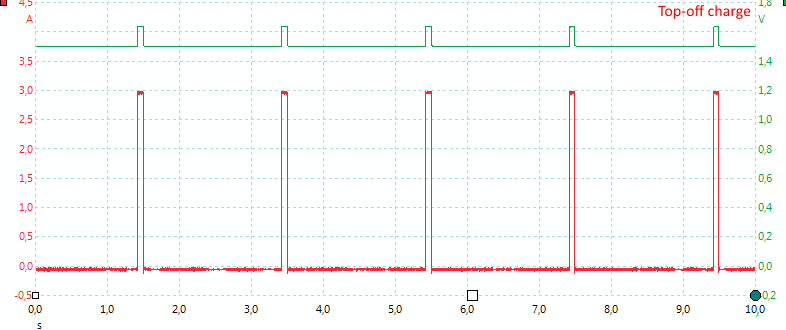
The top-off charge is with 68ms wide 3A pulses, this gives an average current of 100mA.
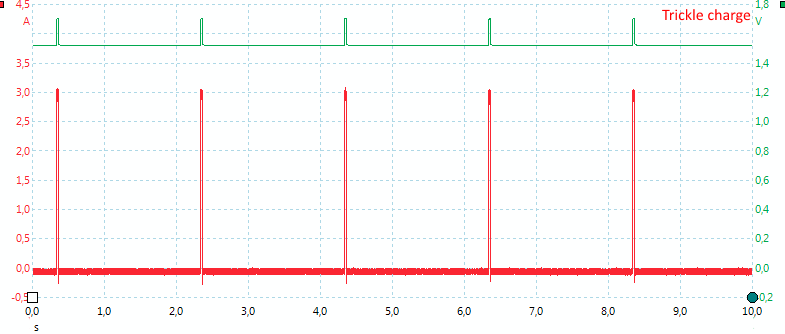
Trickle charge uses the same 3A pulses, they are just shorter at 33ms every other second, this gives an average current of around 50mA, not the 10mA shown in the application.

The charger can detect a full battery very fast.
NiMH discharge
Discharge between 100mA and 1000mA must be selected.
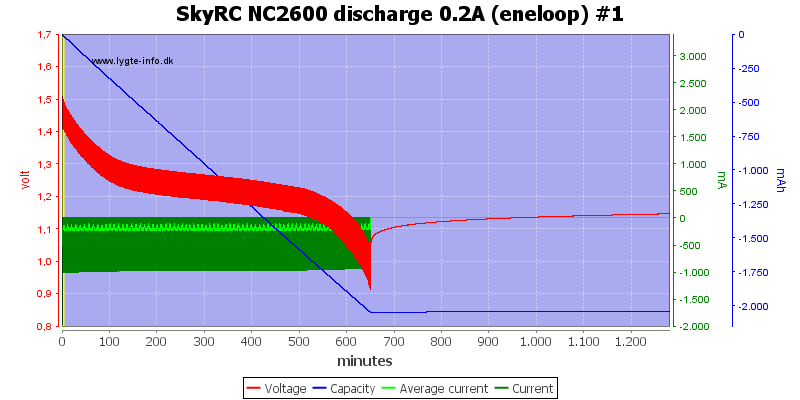
The charger discharges to 0.9 on its default setting.
Display shows 2155mAh
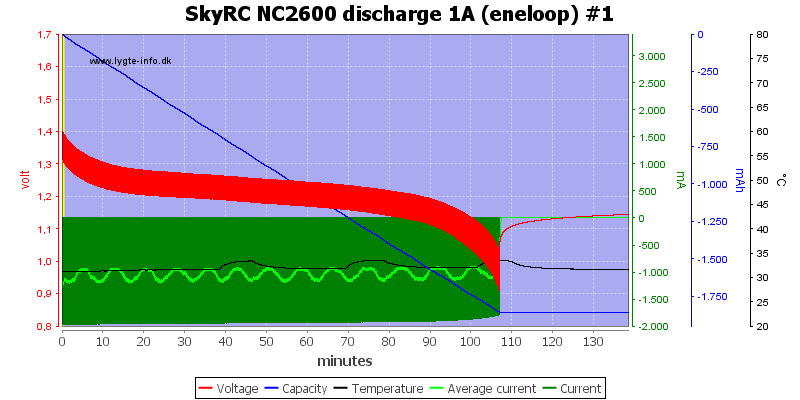
I wonder a bit about the jumps in temperature, they must be related to the fan control.
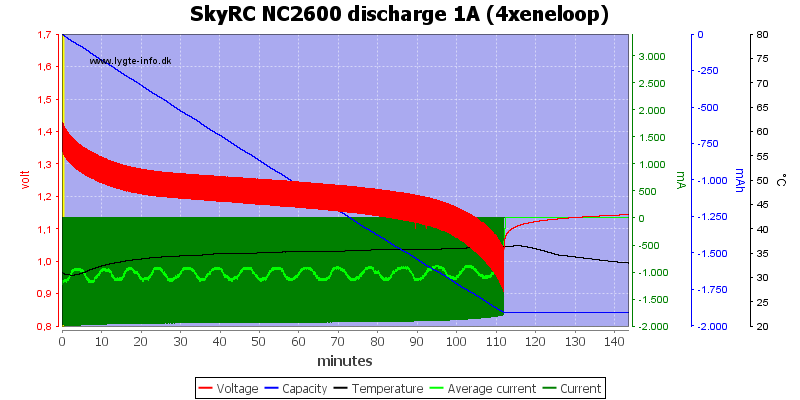
Discharging four cells will warm the batteries a bit, but not much.
Display shows 1862mAh, 1868mAh, 1904mAh, 1833mAh
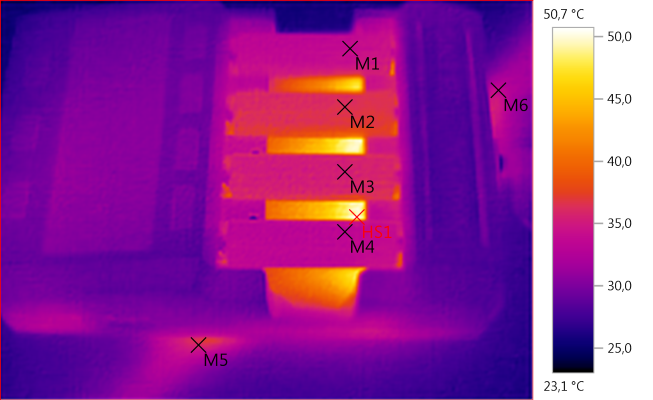
M1: 33,8°C, M2: 36,4°C, M3: 35,3°C, M4: 33,6°C, M5: 35,8°C, M6: 34,0°C, HS1: 50,7°C
Discharge temperature are not that hot, the fan is keeping it cool.
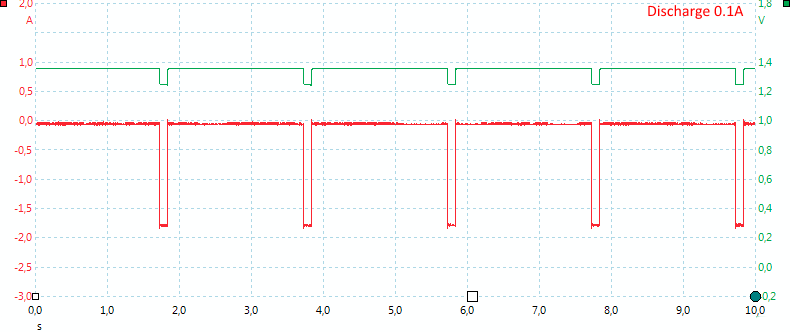
The discharge is also done with pwm, here the lowest setting.
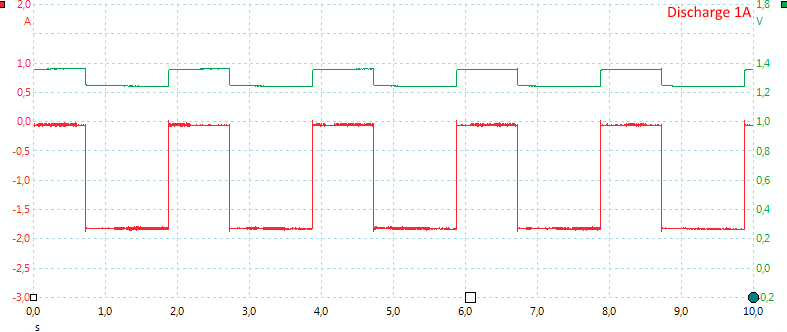
And here the highest setting.
NiMH cycle
Charge rate between 200mA and 2600mA, discharge between 100mA and 1000mA and number of cycles between 1 and 12 must be selected. Between each charge and discharge it rest for 1 hour.
Both first and last operation is a charge.
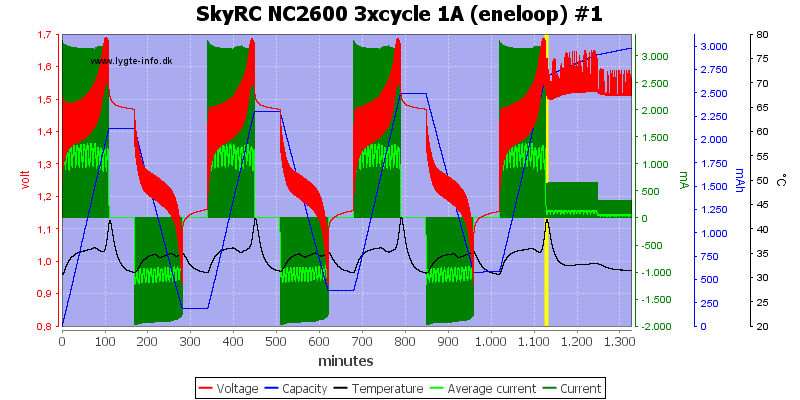
Here I have specified 3 cycles with 1000mA charge and 1000mA discharge.
Notice that the charger does not use top-off or trickle charge between cycles, it is only used after the last charge.
Display shows 1841mAh, 1859mAh, 1847mAh
NiMH break-in
Capacity must be selected from 500mAh to 3500Ah.
Break-in charges with 0.1C for 16 hours, rest one hour, discharges with 0.2C, rest one hour and then charges again with 0.1C for 16 hours.
This means the total time is about 16+1+5+1+16 -> 39 hours or 2340 minutes.
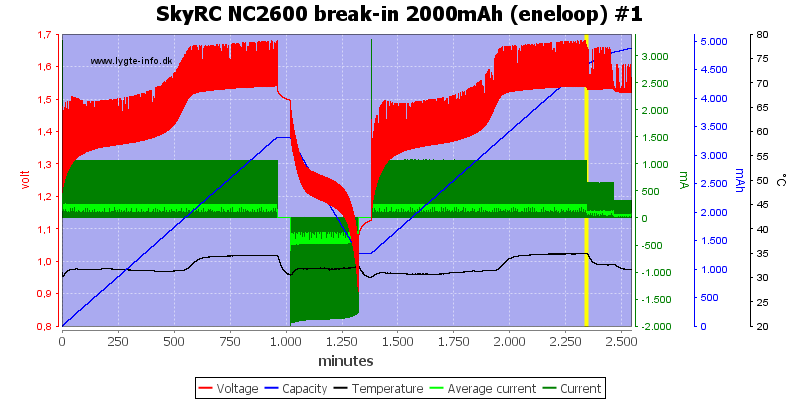
This matches with the curve I recorded. I specified a 2000mAh battery, meaning 200mA charge and 400mA discharge.
I wonder why the charger uses a top off charge here, it is definitely not needed.
Display shows 3199mAh, not really a useful value.
NiMH refresh
Charge rate between 200mA and 2600mA and discharge between 100mA and 1000mA must be selected.
Refresh does one charge, discharge, charge cycle with adjustable currents for both charge and discharge.
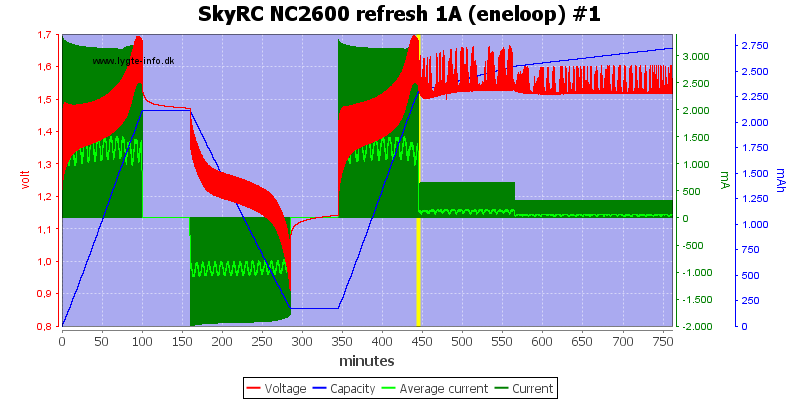
Here I have specified 1000mA charge and 1000mA discharge.
Display shows 2079mAh
USB output
One obvious way to use this output is to keep the phone/tablet powered while it is logging.
- USB output is coded as Sony, except Sony do not use this coding anymore.
- USB output requires charger is powered.
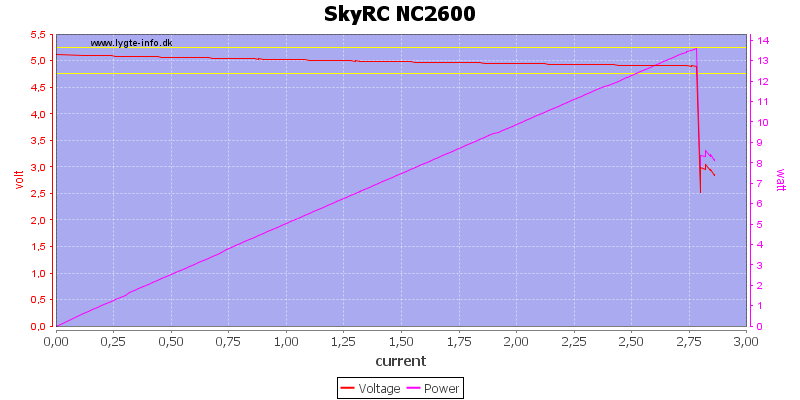
The output is rated for 2.1A and can easily deliver that.

At least for 24 minutes, then it shuts down.
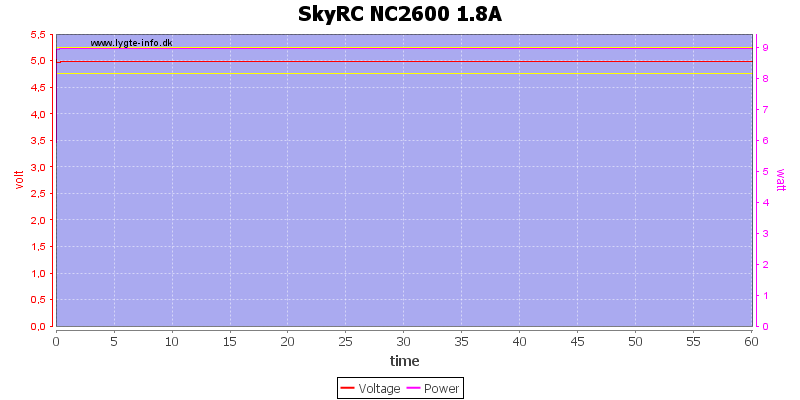
Testing again with 1.8A load and I could get the full hour.

At 0.5A the noise is 14mV rms and 78mVpp.

At 1A the noise is 15mV rms and 106mVpp.
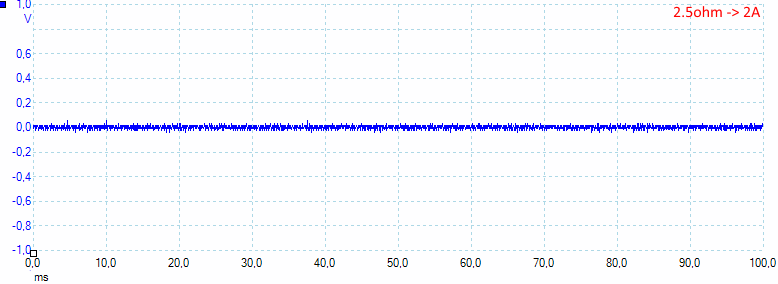
At full 2A load the noise is 12mV rms and 113Vpp, all the noise figures are very good.
Testing with 2830 volt and 4242 volt between mains and low volt side, did not show any safety problems.
Conclusion
Like other analyzing charger it has many functions and a range of currents.
I was not very impressed with the termination at low current, it looks like the -dv/dt value is a bit high. If the application had worked on my phone I could have fixed that (At least for 0.5A).
I would also have like to get rid of the top-off charge and trickle charge.
Current and noise on the usb output is fairly good, but it output could be improved by using a standard DCP coding or a auto coding chip.
The charger is fairly good without the application, but if the application had worked it would have been better.
Notes
The variations in the average current is probably due to interference between my sample rate and the chargers pwm rate.
The scope images may show too low a current, because I uses a 0.1ohm resistor in series with the battery to measure current.
The charger was supplied by Gearbest for review.
Here is an explanation on how I did the above charge curves: How do I test a charger
Read more about how I test USB power supplies and chargers

































































